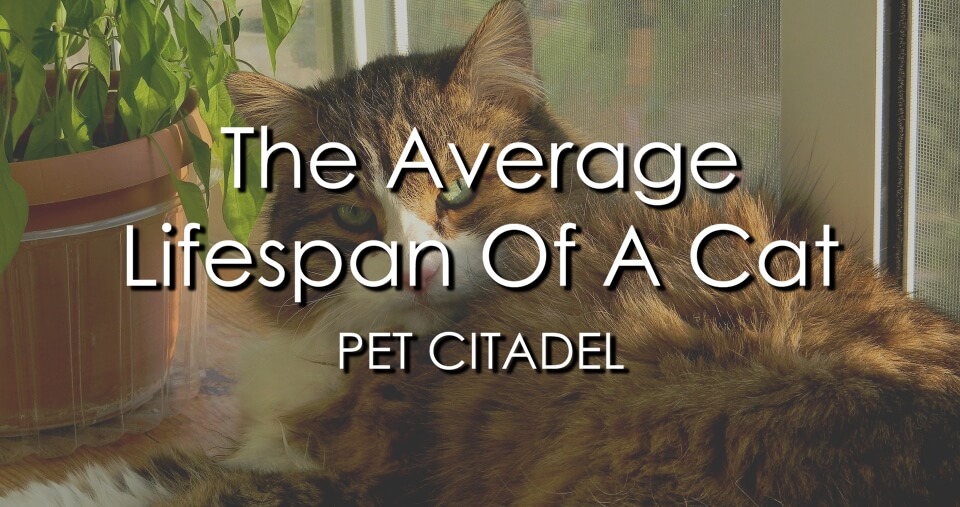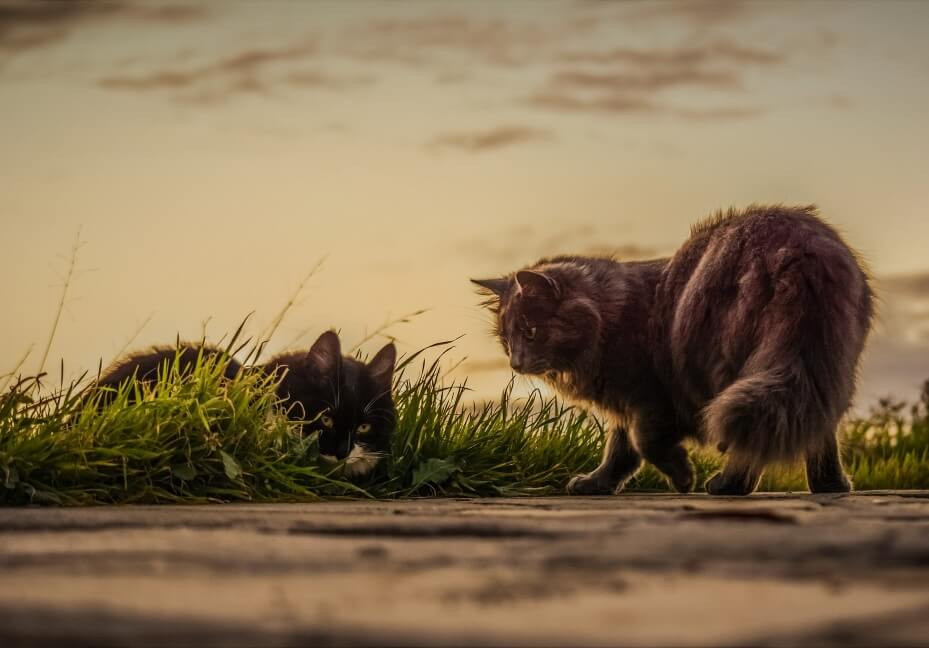This post may contain affiliate links. You can view our affiliate disclosure here.

If you’re interested in knowing the average lifespan of a cat, this article is for you. First, some background:
The history of the domestication of cats goes back thousands of years. Domesticated cats are said to have come from the Near East Countries.
The primary motive of taking cats away from the wild and integrating them into homes was to assist families in controlling the population of rodents.
With time, they spread across the globe as pets. Eventually, the world population began breeding them selectively for particular traits, giving rise to different breeds.
The primary breeds of cats were bred using cats from four major regions, namely South Asia, Western Europe, the Eastern Mediterranean, and the Arabian Sea. As such, the genetic marker of a cat is mostly based on the cat’s original region or race.
A good number of people have cats in their homes as pets. They care for them and love them, and then at some point, they wonder.
How long does a cat live on average? What determines how long a cat lives? Is there anything that a pet owner can do to make a cat live longer? This article answers these questions and more.
Here are some of the factors that determine the average lifespan of a cat.
1. The Type Of Cat
There are two broad classifications of cats: indoor and outdoor cats. The class into which your cat falls is a major determinant of how long it lives.
Indoor Cats

Generally, indoor cats are live longer than outdoor cats for obvious reasons. An indoor cat is much safer compared to an outdoor cat considering the potential dangers associated with the outdoors.
The American Veterinary Medical Association, similar organizations, and veterinarians tend to agree that it is wiser to keep a cat indoors.
Cats that stay indoors hardly come into contact with outdoor hazards, and as such, are less likely to get hurt or fall ill.
How long do indoor cats live? You can bet it’s a lot more years than that of an outdoor cat. The average lifespan of a cat that stays indoors is about 17 years. Some cats that are well taken care of can live 20 years or longer.
Outdoor Cats

Outdoor cats live outdoors and fend for themselves. In contrast to indoor cats, the outdoor cat lifespan is 2-5 years.
Indoor cat owners can quickly identify a health problem before it becomes life-threatening, explaining further why indoor cats live longer than outdoor cats.
2. The Breed Of Cat
Although not set in stone, some breeds of cats tend to live longer than others.
For instance, the Manx and Siamese breeds tend to outlive the cat competition. However, some other breeds have been reported to see their 20s and even 30s. Crème Puff, the oldest reported cat, lived for 38 years! How cool is that?
Domestic mixed-breed and purebred cats can surpass the average lifespan of a cat.
3. The Nutrition Of A Cat
Nutrition is another vital factor that dictates the average lifespan of both indoor and outdoor cats.
While cats are obligate carnivores, homeowners have plenty of food options. However, you need to understand that not all foods are the same.
For example, large portions of lactose or carbohydrates are unnecessary ingredients in the food of adult cats because they lack the capabilities to digest it.
Since they tend to decrease the amount of proteins a cat can digest, carbohydrates are considered unsafe for cats. The unique digestive systems of a cat go well with a lot of proteins. A cat that weighs eight pounds should consume a minimum of 20 grams of protein per day.
A cat that feeds on plenty of proteins and even has carbohydrate-free diets tends to outlive those whose owners don’t pay attention to their dietary needs.
A cat that doesn’t eat the right food is likely to face a lot of health issues, and this reduces its lifespan.
What To Expect With An Aging Cat
The aging process of a cat is usually accompanied by significant behavioral and physical changes. Some of these changes include:
- A weak immune system incapable of fending off foreign invaders.
- Potential health problems such as hypertension, diabetes, hyperthyroidism, cancer, and inflammatory bowel disease.
- A thinner and less elastic skin with reduced blood circulation, which is thus prone to infections.
- A dental disease which can hinder proper eating.
- Arthritis
- Kidney failure
Conclusion
These are some of the important things that a cat owner needs to know about the average lifespan of a cat.
Having the correct information about the average cat lifespan helps you to set realistic expectations regarding the moments you are likely to share with your cat. It also helps you to know how to handle and care for it, and in turn extend its lifespan, if possible.



